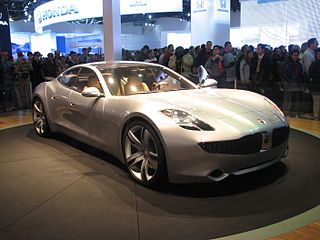If Fisker Automotive Goes Away, It Won't Be the First Bad Idea To Do So
Here’s a conversation I’m having with a friend about the mess at Fisker, i.e., the departure of the company’s founder.
Craig: That’s incredible about Fisker. What do you make of all this?
Friend: It reminds me of John DeLorean in the 1980s and the movie “Tucker” about Preston Tucker in the 1940s. These were very talented, ego-intensive designers, like Henrik Fisker. You have to be willing to play the corporate bureaucracy game in the auto industry, and it involves a boatload of cash flow and is very labor intensive. The automotive sector is filled with stories about engineers and designers clashing, and the same with designers and accountants/bean counters. Fisker Automotive has been facing the big squeeze for several months. I expect a bankruptcy filing or low-priced Chinese investment, or both, like A123 Systems. Fisker makes a very fine car that I’ve enjoyed driving, but it will probably go away.
Craig: In the 4 – 5 years that I was seeing Fisker at the auto shows in L.A. and Detroit, I noted that each year, a) they seemed to be equally far from completion, and b) that the “booth babes” and the ropes around their zillion-dollar prototype were keeping any of us in the media from getting anywhere close to even touching the car. That perturbed me, but not as much as this:
Personally, even leaving out personalities and corporate politics, I’m not sure the car itself has what it takes (had what it took? ) to be successful. Imagine you’re one of the rare breed that:
- Is willing and able to pay $100K for a car
- Wants an EV, presumably because of environmental / geopolitical concerns
- Is worried about range, and thus prefers a PHEV (plug-in hybrid) to a BEV (battery electric)
If I were in that situation, I’d get a full-loaded Tesla-S, and be done with it. I wouldn’t be carting around a heavy, expensive, and defect-prone internal combustion engine.
Of course, the real “game” in the automotive world isn’t catering to a handful of movie stars who can pay whatever they want for their cars. Rather, it’s offering affordable transportation that slowly (or, better yet, quickly) erodes the 230 million gas- and diesel-powered cars and trucks on our roads (while we retire the remaining coal plants).
The market has a way of jettisoning the bad ideas of the world, regardless of the charisma of the proponent. Another recent example in a slightly different realm was Shai Agassi’s pitching battery swapping in the United States, a landmass of 3.5 million square miles. Here’s the poster child for a bad, utterly impractical idea. But that didn’t deter Agassi – for a few years, at least. Yet the idea did finally come down with a crash.
I’ve always said that the bad ideas really are the true enemy of cleantech and sustainability. In the end, there aren’t thousands of good ideas; there are just a few – and it’s our job to locate them and do what we can to move them forward.


Another recent example in a slightly different realm was Shai Agassi’s pitching battery swapping in the United States, a landmass of 3.5 million square miles. Here’s the poster child for a bad, utterly impractical idea. But that didn’t deter Agassi – for a few years, at least. Yet the idea did finally come down with a crash… ++++++++++++++++++++++++++++
However, here I am with a modified version of the same system. BUT, mine is different. Others are building small battery packs and putting several in one EV to simplify packaging and location engineering. My ides on the other hand is almost a satchel or carry-on bag sized unit with steel case and a handle that fits into a rack in the car and includes 30 pounds of an advanced battery so six will run an EV for 100 KM and weigh 200 pounds (at under 35 lbs anyone can put them in and take them out. so around town no need to touch, charge at home… but on a longer trip, take a spare set or even two for all the daily driving range you need. each has its own charger and a 120 vac cord for charging and maintaining outside of the car. The multiple small packages permit placing the packs where they don’t mess with handling by moving the center of gravity or inertial moments.In some localities four packs is enough in others 12 could be mounted, according to driving needs. No robots, the driver can swap six satchel packs in six minutes. Ready then to drive another 100 KM. simple and once established the satchel packs could be lease-able… a lawnmower might just use one, a motorcycle or trike one or two. Flexibility is the key